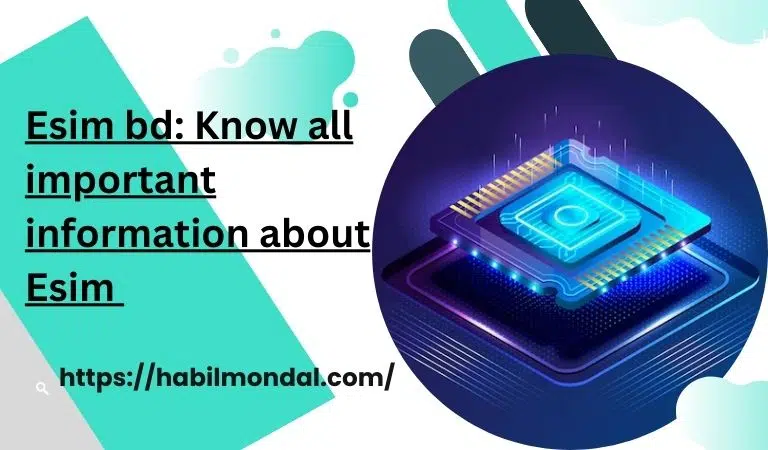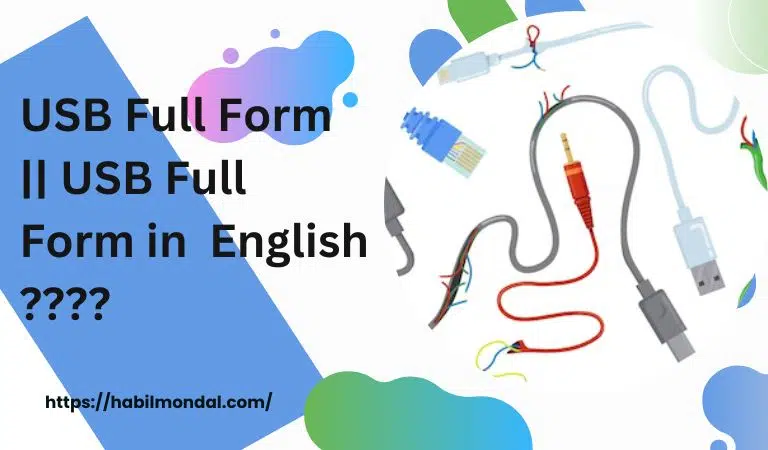Communication media allows you to stay linked to the rest of the world without physically connecting. Our communication tools help you become more sociable by enabling you to share material and engage with people with similar interests. Communication media is a quick, low-cost, and effective means to get your word out there.
We got you covered, whether you’re a company with a story to tell or an individual with a product to market. Reach the appropriate audience by delivering the right message on the right channel using media as your partner. The methods of communication are at your disposal to help!
Our world’s growth and development are aided by the communication medium. We exist to provide greater chances for global knowledge and interaction. People can be empowered, communities can be transformed, and the power of a single message may spark societal change.
What is communication media?
A communication media is a medium or channel via which a message or piece of information can be sent from one party to another. Media are the technologies or communication means used in mass communication to store and disseminate information or data. The mass media communications industry comprises several subsectors, including print media, publishing, news media, photography, film, broadcasting,digital media, and advertising.
Types of communication media
Print and electronic media are the two types of communication…
- Written media of communication
- Media for oral communication
Written media of communication:
When communication takes the shape of a written document, this referred to as textual communication media. Letters, memos, reports, notices, bulletins, publications, newspapers, magazines, circulars, visual media, and books are examples of written communication media.
Media for oral communication:
Oral communication medium refers to communication that takes place through oral forms. It also known as nonverbal communication.
Face-to-face conversations, interviews, group discussions, meetings, conferences, seminars through the public address system, and speeches are examples of oral communication media.
Which is the type of communication media?
The two types of communication media are distinct.
- Analog media of communication
- Digital media for communication
Traditional radio, television, and telephone transmission are examples of analog media. Telegraphy, computer networks, and computer-mediated communication are examples of digital media.
Which of the following is a form of directed communication media ?
Twisted pair transmission is a type of communication that is steered. The physical medium via which signals are transferred is the transmission medium. Bounded media is another name for guided media.
A personal letter in English
Personal letters come within the realm of private affairs or activities, as evidenced by the title. Own letters written when two people speak about their sentiments, emotions, news, or facts.
A letter like this sent between:
(a) Members of the family
(b) Friendship
(c) Relatives
(d) Neighbors
This letter also contains the following personal information:
(a) Feeling or reaction
(b) An idea or a thought
(c) Emotional encounter
(d) Top-secret subjects
(e) Place the order
As a result, a personal letter is defined as a letter that not linked to business or business-related activities and prepared only for personal reasons, issues, or activities.
Read more related
OSS full form || OSS Full Form in Computer
Business letter (communication media)
Business letters, as a modern means of communication media, play an essential part in establishing a communication network or relationship between persons. It widely recognized and regarded as a straightforward but dependable mode of communication. It is less expensive and offers a resource for future use.
Because it written, it maintained as proof in the event of a dispute. As a result of a company’s global development, business letters are becoming more complex daily. As a result, the right approach to producing such a letter is critical for the students.
The business letter is among the most efficient means of company communication. It known as the weapon in the corporate world for communicating officially to solve numerous form purposes.
A business letter is a letter prepared for conducting business. A business letter is any letter designed and dedicated to exchanging information relevant to commerce and trade-related activities. business letter typically contains information about trade inquiries and responses, orders for goods, acceptance or refusal of orders, complaints about delays or mistakes in the supply of goods, adjustments for customer problems, credit collection and referrals, and other information related to trading.
Above all, a business letter defined as a letter that is
(a) written by a business entity,
(b) addressed to a business entity, and
(c) addressed to a business entity.
Importance of business letter (communication media)
The business letter serves as a representative of the company. It facilitates business-to-business contact. The following points emphasize the significance of a business letter:
Communication system with advanced features:
In the corporate environment, a business letter serves as a form of communication media. As the modern company grows, such letters increasingly employed as mandatory assistance.
Ambassador Silence:
The problem, demand, and expectations of a company concern addressed in such a letter. It functions as a silent Ambassador because everything written.
Business development:
Businesses from all around the world use business letters to communicate with one another about common interests. As a result, the company boundary can no longer defined. Business is developing all around the world.
Establishing a connection:
Through a business letter, a businessman establishes contact and establishes a relationship. Through business letters, commercial concerns, as well as personal matters, discussed at the same time.
Cost-cutting measures:
A business letter is less expensive. It will be pretty expensive if we employ any technology. Furthermore, other kinds of communication are prohibitively costly for a small farm. Although inexpensive, business letters are powerful in action. Using such a letter saves money.
Legal standing:
Communication through the mouth Although media does not have a legal identity, written communication does. As a result, a business letter can be used in court as evidence. It serves as a
It acts as a piece of documentary evidence to avoid any confusion or misunderstanding.
Assisting local and international commerce:
In local and international trade, quotations, inquiry orders, and product receipts are transmitted by business letter. This bridges the gap between domestic and international trade.
More Importance :
Generate goodwill: When a company sends a business letter, it reveals the company’s mentality. If the writing style is remarkable, the reader will get a positive notion and spread goodwill in the corporate sector.
Demand and supply connectivity: The market’s desire is communicated to suppliers via a business letter. And determining what the appropriate supply should be is also attainable through a business letter.
Solution to any problem: There may be a conflict of interest between business people due to commerce. A business letter can be used to resolve such a problem because such a letter serves as proof in the event of a dispute.
Accessibility for all: Personal access is restricted, while business letters are unrestricted. It may readily pass from person to person, from door to door, from desk to desk, and from person to desk.
Expansion of the business’s scope: The use of a business letter has simplified commercial operations. As a result, we see access to business letters everywhere in the firm. The importance of the business letter in a company’s progress is critical.
A constant physical connection : A constant physical connection between the supply and the receiver is unnecessary. Because of business letter communication, the task gets more manageable.
Maintaining secrecy: Because a business letter is written, there is a reasonable probability of maintaining confidentiality. A business letter is the best tool to use if you need to communicate a secret message.
Serve as a point of reference: Because it is a written document, a business letter may be used as a reference for future correspondence. It may be utilized to connect the past, present, and future wherever needed.
Qualities of an ideal business letter
A successful business letter must possess specific characteristics that will assist the businessman in achieving his objectives. The following are the distinguishing characteristics:
A well-defined structure: A business letter’s headline, inner address, and other components must follow a specific structure. The appeal of a letter is increased if it is put according to style or regulations. The more appealing appearance attracts the receiver’s attention.
Preparation: It is the first writing phase, including making deliberate judgments about the message’s goal, audience, substance, and organization. Effective and profitable communication is the result of proper planning.
Language simplicity: A business or commercial letter written in simple language so that the recipient understands the message’s purpose and relevance. It’s best to avoid using words that are both confusing and complicated.
Conciseness: Brief yet informative business letters are recommended. It must be of sufficient size to convey a compelling message. The following guidelines can be used to make a statement more concise:
(i) only provide pertinent facts
(ii) as much as possible, avoid repetition,
(iii) Avoid click and overused expressions; for example, instead of writing ‘close to,’ write ‘nearby.’
(iv) structure the message so that simple and short words and brief sentences are used.
Relevance: A good business letter should provide relevant information. It should prevent unnecessary information that wastes the reader’s time and obscures the critical data. Quality, not quantity, is the goal of every good business letter.
A successful business letter must possess specific characteristics that will assist the businessman in achieving his objectives. The following are the distinguishing characteristics:
Read more related
ALU full Form in the English Language
Others qualities:
Completion: The writer of such a letter must paint a comprehensive image in the recipient’s head. Incorporating any incomplete or partial data into a letter is prohibited. In this case, the writer must possess sufficient expertise to structure the message to avoid ambiguity. For communication media, completeness is a critical attribute.
Purpose specific: A business letter’s aim should be precise, and it should then explain the message’s success.
The vague message will bring no action but a waste of time before time, effort, and money.
Clarity: A business letter’s message must be readable and understandable. The writer’s intent must be communicated to the reader or recipient in a clear tone.
Completion: The writer of such a letter must paint a comprehensive image in the recipient’s head. Incorporating any incomplete or partial data into a letter prohibited. In this case, the writer must possess sufficient expertise to structure the message to avoid ambiguity. For communication media, completeness is a critical attribute.
Purpose specific:
A business letter’s aim should be precise, and it should then explain the message’s success.
The vague message will bring no action but a waste of time before time, effort, and money.
Free of Errors: An error letter conveys a negative opinion of the center and its rank. Any error avoided since the sender pre-warned about the use of style, format, grammar, and language.
Appealing format: A business letter’s format and style should be appealing. The outward look of the letter, as we all know, significantly impacts the reader’s first impression. As a result, extra effort make the letter stand out.
Courtesy: Courtesy entails treating others with respect when approached. It addresses a crucial aspect of corporate communication media. It is free, but it has a favorable influence on creating solid commercial relationships. To be polite, a writer should respond to a letter swiftly, succinctly, and entirely, with dignity and flavor.
Negotiation skills:
Every letter must have salesmanship since the quality of a letter reveals its origin or source. As a consequence, the receiver develops a positive impression of you.
The ”You’re’ mentality: The ‘You’ attitude is a literary style that strongly emphasizes the reader. I’s and We’ s should be avoided at all costs, and as many You’ s as feasible should be included.
Tact: This is a trait that is closely related to civility. It’s critical when dealing with complaints, modifications, and credit requests. The goal of tactfulness is to keep someone’s goodwill even though his bid has been denied.
A optimistic attitude: Avoid the words “no” and “sorry,” as they are unappealing to everyone. These are inappropriate words to use. The positive should take center stage instead. Even the words ‘no’ and sorry might be written as ‘another time’ and ‘I will try. Keep the above points in mind while you write your business letter. As a result, such references must be made.
Types of interviews
Interviews may take one of the following formats, depending on the circumstances:
From a structural standpoint:
In this case, the interview might follow either of the following patterns:
Interview with a structure:
In this situation, all asked identical questions and had to answer them in a specific order. Interviewers evaluate all applicant qualifications in the same manner and under the same circumstances and ask each applicant the same questions.
Interview using a semi-structured format:
This interview follows a standard structure and may include questions on other topics of interest. Not all candidates offered more questions in the same areas, and those questions might be unorganized.
Unstructured interview:
An unstructured interview is one in which no set of questions is followed. This type of interview yields information that a structured interview cannot.
Personal view:
The following methods are how it manifests:
Selection interview:
The most prevalent and vital interview type is the selection interview. This kind of interview utilized to find qualified candidates for available positions.
Interview for assessment or appraisal:
An employee’s evaluated to ensure that he meets the job’s quality, efficiency, commitment, and devotion requirements. An assessment interview might reveal an employee’s ambition, drive, and morale.
Interview for a promotion:
Based on their performance, employees moved up the organizational structure. A promotion interview aims to assess an employee’s present performance and capacity to perform at a higher level. The discussion also makes the applicant aware of the ne.
Counseling interview:
This is an interview that harms both the traveling employee and the interviewer. When conducting such an interview, it brought up whether an employee’s performance is subpar or whether he is having any issues at work. As a result, such an interview aims to identify the issues and make recommendations for resolving them.
Follow-up interview:
When an employee leaves a company, whether willingly or by firing, an interview conducted to:
(i) Determine why you want to quit?
(ii) Explain why you fired?
(iii) The departing employee’s perspective will be valuable in modifying personnel policies.
Stress interview:
This interview meant to put the interviewee in a stressful environment so that the interviewee’s reaction observed. For challenging jobs, a similar interview held on.
Interviews are an essential kind of communication media.
How to become an effective interviewer
According to Murphy and Peck, anyone who wishes to become a good interviewer should do the following:
- Allow the applicant to do the most of the speaking. You’re interviewing yourself rather than interviewing if you talk more than 50% of the time.
- Provide brief verbal comments to keep the candidate talking. “Tell me more,” “That’s intriguing,” “What happened then?” and other similar questions should be asked of the interviewee.
- Pay complete attention to the interviewee and respond by encouraging facial movements, eye movements, expressions, and head nods.
- Allow for pauses in the dialogue if you believe the candidate is about to share crucial information. But avoid lengthy delays or breaks when the applicant has finished a topic.
- Make an effort to comprehend the candidate.
- Make it simple for the candidate to express himself.
- Respect other people’s sentiments, even if you believe they are incorrect.
- Always believe what the candidate says. Never frown, exhibit surprise, or express displeasure.
- Make sure the candidate does not abruptly shift the subject.
- Never argue with a candidate.
- Sit on the same side of the desk as the candidate and speak casually and straightforwardly.
Guidelines for the interviewee regarding interview
A candidate should be aware of the following rules to be a successful interviewee:
Make sure you’re ready for the interview:
The interviewee should prepare for the following factors:
( a) Get to know yourself:
Inner fulfillment, name and renown, social status, prosperity, security, comfort, travel, and power are all goals that the interviewee should strive for via his employment. Before applying for any job, an applicant must understand why he is using it, i.e., explain its appropriateness.
(b) Know the firm:
The interviewee should be familiar with the company where he is applying for a job. He should learn everything he can about the company’s nature and function, its growth over time, and future goals. A greater understanding of the organization demonstrates that the individual is serious and ready to learn. This will give the interviewee a favorable impression.
(c) Prepare for questions:
The interviewee should get ready for any conceivable questions that posted… During the interview, questions on academic and family history, interests, hobbies, prospects, projected pay and perk. The candidate should talk boldly and truthfully.
(d) Preparing questions to ask:
The applicant should list pertinent questions he may ask if the interview does not provide him with all the required information. Working conditions, training
Getting ready for the interview:
The interviewee should dress appropriately by paying attention to the following:
(a) Put on proper attire:
For the interview, the interviewee should dress appropriately. It is necessary to have clean fingernails, polished shoes, and a good hairdo. The overall appearance should be sad and sophisticated.
(b) Obtaining the required certificates:
If the interviewer must bring any certificates or testimonials, they should be kept in a file or bag.
(c) Arriving on time:
The interviewee must attend the interview location on time. He should aim to arrive 10 to 15 minutes ahead of schedule.
Getting ready for the interview:
It is not simple to prepare for an interview. The interview broken down into the following sections:
(a) Impression :
When entering the interview room, the interviewee should remain calm and maintain complete confidence while attempting to prevent anxiety. After that, entering the interview room, he should greet all interview board members appropriately. He should not take his seat unless he specifically requested to. Your initial impression influences the interviewer.
The first impression makes an impact on the interviewer. So, the interviewee should be well prepared to show a positive manner.
(b) Answering questions:
The interviewee should answer the interviewer’s queries with assurance and favor. A candidate shouldn’t make up an answer or waste time if they don’t know it. Without being nervous, he respond directly to the question.
(c) Posing inquiries:
If the scenario allows, the applicant can ask some pertinent and specific questions. These should be inquiries on the employment climate, prospects, growth, and perks. The queries asked in a respectful manner that demonstrates a great interest.
(d) Leaving:
When the interviewer says “Good Day,” thank them for their time, and leaves the room graciously, the interviewee must gather his file or bag and wish them “Good Day.” While living, movement should be quiet and reflective of decency and self-assurance.
Read more related
Face-to-face conversation (communication media)
Face-to-face communication is crucial to Coral’s fundamental communication media. When they have the opportunity, individuals in our everyday lives express their thoughts and opinions through face-to-face conversations.
Face-to-face communication or face-to-face discussion occurs when a sender or recipient, speaker, or audience speaks verbally and physically sees each other. At first glance, they may appear identical to oral communication, yet they are distinct in specific conditions. Telephonic dialogue, for example, is verbal, and we cannot tell it apart from face-to-face communication.
Two presidents of two nations who greet one other with a grin and merely shake hands have a face-to-face dialogue or communication.
So, all oral communication is not face-to-face communication; however, all face-to-face communication is verbal. Above all, In every office Face to face conversations between boss and employee have occurred.
communication media: Advantages of face-to-face conversation
The following are some of the significant advantages of face-to-face communication:
- Facial expressions and gestures aid in effective communication since the message is reinforced by the tone, pitch, and intensity of the speaker’s voice.
- This type of talk can help you adjust your tone and become more compassionate and sympathetic when the situation or setting calls for it. There is, therefore, space for improvement.
- In the case of a public meeting or discussion, face-to-face communication is standard. It can inspire or motivate the audience instantaneously.
- It necessitates less preparation for transmitting every message, resulting in speed.
- It allows for casual conversation and aids in developing trusting relationships.
- There are no costs associated with face-to-face communication because no equipment or accessories are used. To participate in such a dialogue, only one’s actual appearance or presence required.
- It also provides rapid response, better flexibility, and increased accessibility.
Disadvantages of face-to-face conversation (communication media)
Face-to-face communication has the following drawbacks:
Difficult to implement in giant corporations:
Face-to-face communication is incredibly challenging in today’s huge businesses, mainly when units or divisions located in various locations.
In big groups, it is ineffective:
It is pretty challenging to communicate a message across two enormous groups. Even though the speaker speaks directly to them, the crucial personal touch is lacking. His discourse devolves into a monologue in the absence of a meaningful response.
Ineffective if the listener is not attentive:
The attentiveness of the listener closely tied to face-to-face discussion. If listeners inactive, they will readily diverted since human beings can listen to and catch problems faster than they convey.
Read more related
OTT full form : Know all about OTT
Conclusion
In conclusion, This article shows communication media and its types, advantages, disadvantages, etc. The meant to be helpful, we hope. Please let your friends know if you like the article.
I look forward to your valuable comments. Read the message and learn about communication media. See you in the following entry. Be healthy.







